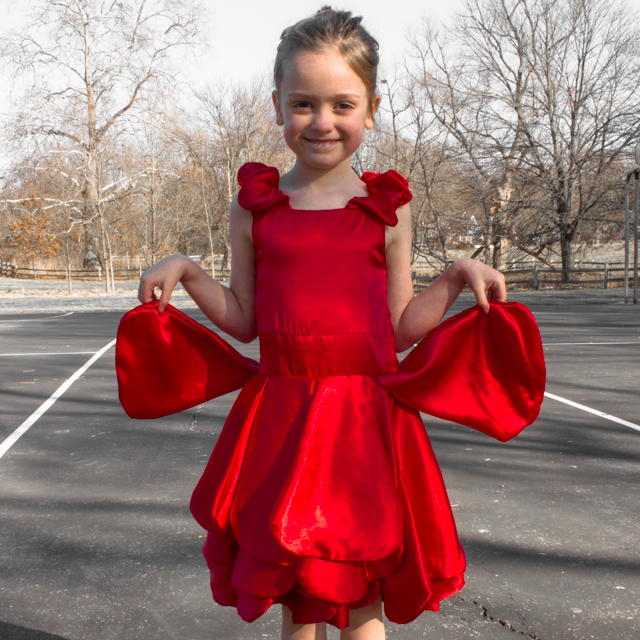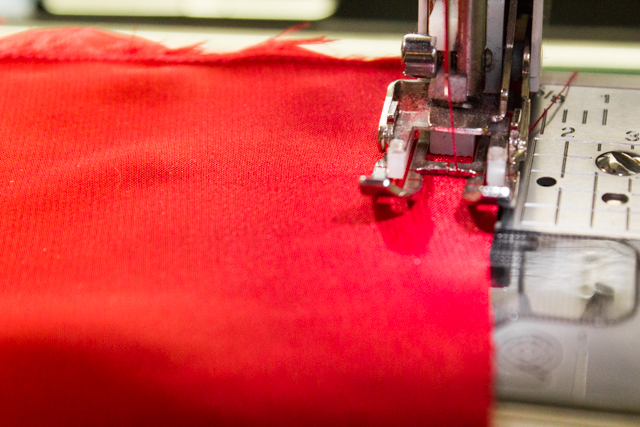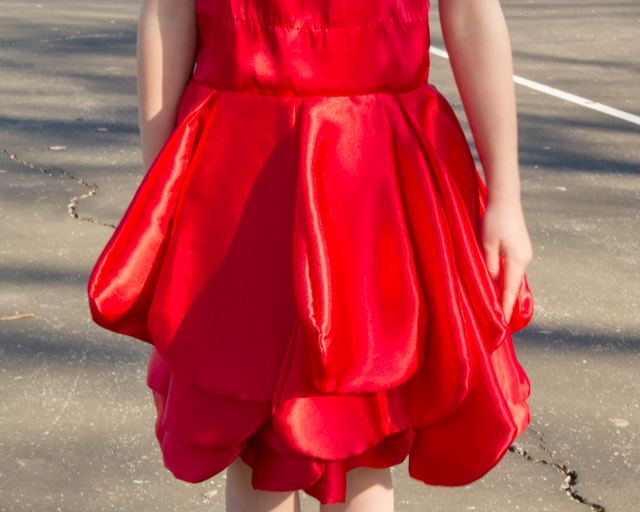Need something sustainably fashionable for that next big event, formal occasion, or fashion show fundraiser? Here’s how I sewed a formal dress for my daughter to model in our town’s Trashion/Refashion Show–from bloomers to bodice, it was created entirely from one silk sheet.
The entire garment is composed of a fitted bodice, a cascading petal skirt in three layers, and a matching pair of bloomers to wear under the dress. The bones of the bodice come from the bodice pattern in Little Girls, Big Style; I sized it down one size to make it more fitted, then added several inches to the length to compensate for the smaller sizing. I cut the sheet so that the interesting detailing from the top hem shows up here–I didn’t want to waste that part of the sheet, and this was the most likely place for it to be included.
I completely lined the bodice using more fabric from the silk sheet (although if I’d known how closely I was going to cut it–literally–by the end of this project, I may not have done this step). I wanted to use as few elements as possible that did not originate with the sheet, so instead of including a zipper in the bodice, I sewed the two shoulder straps only halfway across in the back. The straps are wide enough to provide plenty of support even so, and the extra room I eked out enables the dress to be put on over my daughter’s head without any zippers, buttons, or snaps. I used the rest of the sheet’s hem for the ruffles on the shoulder straps. Sewn into tubes, the fabric encases sturdy webbing, but is easily four times longer than the webbing, so it naturally scrunched up into ruffly-looking straps that add a lot of volume to the shoulder with little additional weight, and look puffy and soft while remaining quite substantial and supportive. Next »
The basic pattern of the skirt is that of a circle skirt. I created the circle skirt pattern to fit the bodice of the dress at the waist, and at lengths of knee-length, two inches above the knee, and four inches above the knee. Each petal is one-eighth of the circle skirt, with the bottom rounded into a petal shape. There are eight petals for each of the three lengths, each petal consisting of two layers of red silk sheet, sewn right sides together and then turned. I did not edge-stitch the petals; silk is so light and breathable that this way, the petals tend to catch the air and look more like real rose petals. With only eight petals per layer, the petals in each layer of the skirt do not overlap at the waist, although they do have plenty of overlap at their bottom hems. This wouldn’t work if the skirt was a single layer, because it would show too much skin, but by centering both subsequent layers of petals on the gaps between petals in the previous layers, the skirt stays very flowy while remaining modest for normal walking, running, and skipping. Because the skirt is meant to be spun in, however, I used the very last remaining scraps of the sheet to sew a pair of matching bloomers to be worn underneath the dress. Now my daughter can twirl as much as she wants! This is the third year that my kiddo and I have refashioned a garment for her to model in the Trashion/Refashion Show. One year she was a Fairy Princess, the next year she was a Rainbow Fairy, but I think this year’s Rose Girl might be my favorite yet!




